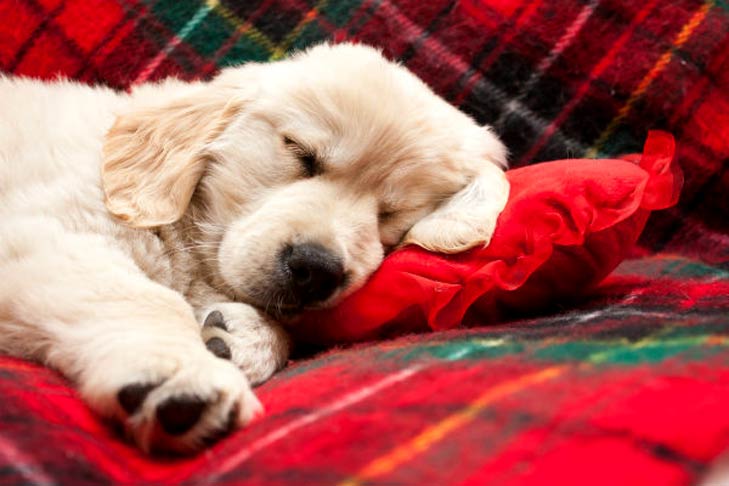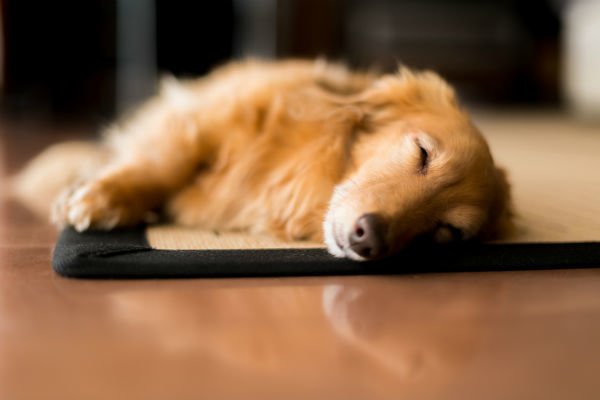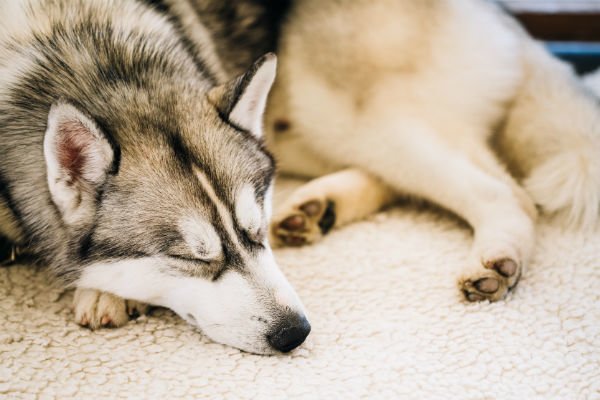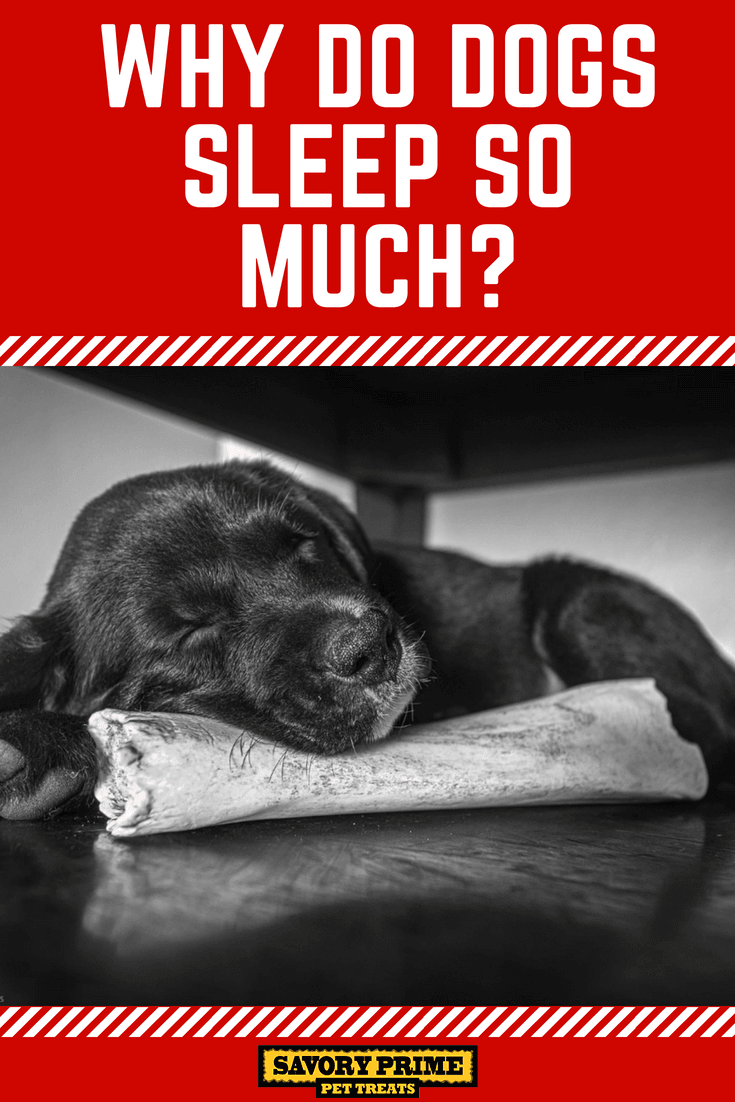Does your dog spend a good deal of the day with his head on a pillow? Thought so. While it may seem excessive, sleeping for long periods is a natural part of the canine lifestyle. Dogs tend to spend 50 percent of the day snoozing, 30 percent awake but lying around, and 20 percent being active.
The amount of zzz’s your dog needs depends on factors such as:
- Age and size
- Breed and activity level
- Life changes
- Health
Dog’s Age and Size
On average, dogs spend about 12-to-14 hours of the 24-hour cycle sleeping. Older dogs need significant amounts of sleep simply because, as they age, living becomes more difficult. They tire out more easily and need rest in order to function properly. Puppies, like babies, spend a lot of time exhausting energy while playing and exploring their new surroundings. Because of this, they might need as much as 18-to-20 hours of sleep to recoup! And of course, all dogs need sleep, but it tends to be the bigger breeds that are known for constant dozing.
Breed Activity Level
The amount of sleep dogs need also depends on what they are bred to do. For instance, it’s necessary for working dogs to stay awake because of the physical and mental demands they face each day. Dogs that have tasks to hold their attention will spend most of the day active, dedicated to completing those tasks. Dogs that aren’t bred for a certain purpose and lead more sedentary lifestyles, however, will spend most of the day doing whatever they want (i.e. sleeping).
Life Changes in Your Dog
As is the case for humans, if dogs experience any sudden life changes, they are likely to react. Because dogs adapt so well to their original environments, any shift in their usual experiences may affect them. This might manifest if they experience the death of a companion or a big move, among other major changes. Understandably, dogs may need extra sleep to get their mood and energy level back to normal.
Health
Because sleeping is an essential part of dogs’ everyday routines, you shouldn’t be concerned if your dog takes a great liking to the art of snoozing. However, if you find that there is a dramatic change in your dog’s sleeping habits or something seems a little off, you might want to consult your veterinarian. Excessive sleep has been linked to conditions such as canine depression, diabetes, and hypothyroidism.
What are Dogs’ Sleeping Patterns?
Dogs’ sleeping patterns are pretty similar to our own. They start out in the slow wave of sleep, during which breathing slows, blood pressure drops, and heart rate decreases. After about 10 minutes, they enter the rapid eye movement (REM) phase of sleep, when their eyes roll under closed lids, and their body might react to dreams. The main difference between our sleep and theirs is the amount of time spent in this stage.
Humans, who often stay awake for the whole day and have extended sleep at night, spend up to 25 percent of sleep in REM. Dogs, on the other hand, are only in REM for about 10 percent of their sleep time because of inconsistent sleep schedules. Since they’re flexible sleepers with the ability to fall asleep out of boredom and wake easily and become alert immediately, they end up needing more total sleep to make up for lost REM during their cycles.
Ultimately, many factors contribute to dogs’ excessive sleeping. While it may occasionally be necessary to call attention to this habit, most days your dog probably just wants a nap. And who can blame him?

Recent Pet Posts
Blog Categories
Product categories
- Accessories (9)
- Chicken & Veggie Wraps (8)
- Grillers Jerky Tenders (4)
- Jerky Treats (10)
- Made in the USA (9)
- Non-Rawhide Treats (28)
- Beggar Bone (11)
- Bully Sticks (4)
- Butcher Bone (4)
- Cod Skin Fish Treats (3)
- Pork Skin Twists (2)
- Pressed Rawhide Bones & Rolls (16)
- Bones & Rolls (6)
- Pressed Rawhide Bulk (6)
- Twist Sticks (4)
- Savory Munchies (13)
- Supreme Bones & Rolls (48)
- American Rawhide Bulk (16)
- Rawhide Bones (14)
- Rawhide Chips (6)
- Rawhide Rolls & Sticks (12)
- Uncategorized (8)




